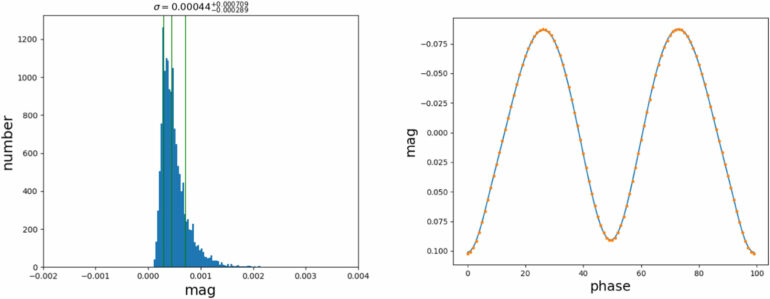A contact binary is a strongly interacting binary system with two component stars filled with Roche lobes, and there is a common envelope around the component stars.
With the release of thousands of light curves of contact binaries, it typically takes several hours or days for the current methods to derive the parameters of contact binaries.
Dr. Ding Xu and Prof. Ji Kaifan from the Yunnan Observatories of the Chinese Academy of Sciences (CAS), in collaboration with Li Xuzhi from the University of Science and Technology of China, have proposed a machine learning-based method to quickly obtain the parameters and errors of contact binaries.
This study was published in The Astronomical Journal on Oct. 18.
The researchers first used a neural network (NN) to establish the mapping relationship between the parameters of the contact binary stars and the light curves, and obtained one model without the influence of the third light and one model with the influence of the third light, respectively.
The error of the light curves generated by these two models is less than one thousandth of the magnitude, and the parameters and corresponding errors of the contact binaries can be quickly obtained by combining the Markov chain Monte Carlo algorithm (MCMC). Compared with the traditional methods, this method not only meets the requirements in accuracy, but also improves the speed by four orders of magnitude under the same running condition.
This method makes it possible to derive the parameters of a large number of contact binaries. Next, the researchers will conduct statistical analysis of the contact binaries in the TESS survey data of the space telescope and the ZTF survey data of the ground telescope.
More information:
Xu Ding et al, Fast Derivation of Contact Binary Parameters for Large Photometric Surveys, The Astronomical Journal (2022). DOI: 10.3847/1538-3881/ac8e66
Provided by
Chinese Academy of Sciences
Citation:
New method can quickly derive contact binary parameters for large photometric surveys (2022, October 24)
